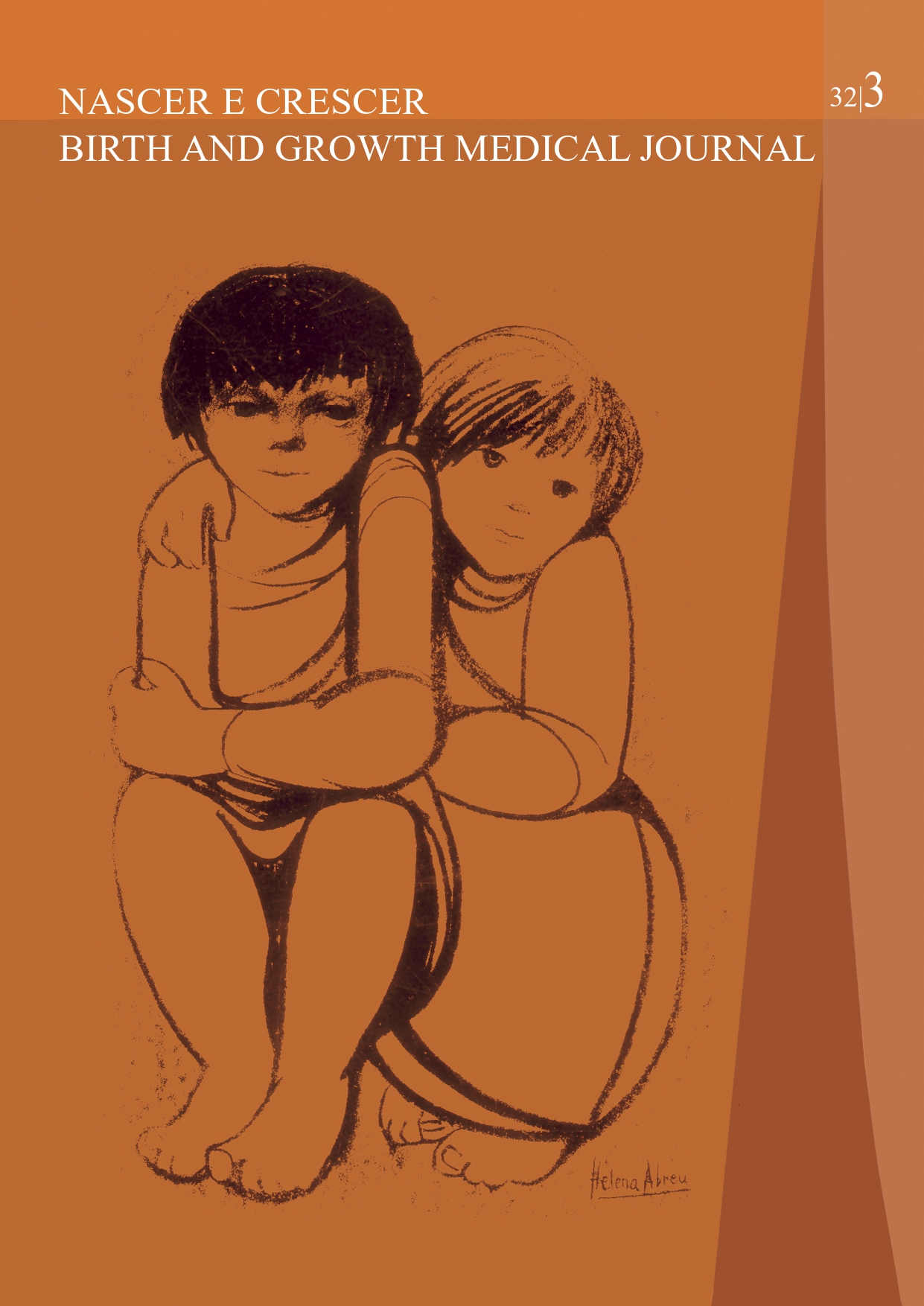Imaging clinical case
DOI:
https://doi.org/10.25753/BirthGrowthMJ.v32.i3.26251Keywords:
abdominal pain, children, congenital diaphragmatic hernia, late-presentationAbstract
Congenital diaphragmatic hernia (CDH) results from incomplete closure of the pleuroperitoneal canal during fetal development, allowing herniation of abdominal contents into the thoracic cavity. It usually presents in the neonatal period with respiratory distress, but can also manifest later in life.
The diagnosis of late-onset CDH should be kept in mind in the differential diagnosis of children with acute or recurrent nonspecific symptoms, especially respiratory or gastrointestinal symptoms or both. Clinical suspicion and plain radiography remain the key to diagnosis. Early surgical correction of the diaphragmatic defect is crucial to prevent possible passage or strangulation of abdominal viscera and severe respiratory problems.
In the present report, the authors present a typical case of late-onset CDH with acute presentation of gastrointestinal symptoms (e.g., abdominal pain and vomiting). Thoracoscopic repair was performed, with reduction of the abdominal contents (small bowel and colon) and suturing of the posterior diaphragmatic defect.
Downloads
References
Tovar JA. Congenital diaphragmatic hernia. Orphanet J Rare Dis. 2012 Jan;7:1.
Karmazyn B, Shold AJ, Delaney LR, Brown BP, Marine MB, Jennings SG, et al. Ultrasound evaluation of right diaphragmatic eventration and hernia. Pediatr Radiol 49, 1010–1017 (2019). https://doi.org/10.1007/s00247-019-04417-1.
Badillo A, Gingalewski C. Congenital diaphragmatic hernia: treatment and outcomes. Semin Perinatol. 2014 Mar;38(2):92-6. doi: https://doi.org/10.1053/j.semperi.2013.11.005. PMID: 24580764.
Bagłaj M. Late-presenting congenital diaphragmatic hernia in children: a clinical spectrum. Pediatr Surg Int. 2004 Sep;20(9):658–69.
Kim DJ, Chung JH. Late-presenting congenital diaphragmatic hernia in children: the experience of single institution in Korea. Yonsei Med J. 2013;54(5):1143-1148. doi: https://doi.org/10.3349/ymj.2013.54.5.1143.
Cigdem MK, Onen A, Otcu S, Okur H. Late presentation of bochdalek-type congenital diaphragmatic hernia in children: a 23-year experience at a single center. Surg Today. 2007;37(8):642–5.
Rygl M, Pycha K, Stranak Z, Melichar J, Krofta L, Tomasek L, et al. Congenital diaphragmatic hernia: onset of respiratory distress and size of the defect. Pediatr Surg Int [Internet]. 2007;23(1):27–31. Available from: https://doi.org/10.1007/s00383-006-1788-3.
Downloads
Published
How to Cite
Issue
Section
License
Copyright (c) 2023 André Morais, Ana Luísa de Carvalho, Catarina Barroso, Maria João Magalhães, Vera Baptista , Liliana Abreu , Margarida Reis Morais

This work is licensed under a Creative Commons Attribution-NonCommercial 4.0 International License.
Copyright and Authors' Rights
All articles published in Nascer e Crescer - Birth and Growth Medical Journal are Open Access and comply with the requirements of funding agencies or academic institutions. For use by third parties, Nascer e Crescer - Birth and Growth Medical Journal adheres to the terms of the Creative Commons License "Attribution - Non-Commercial Use (CC-BY-NC)".
It is the author's responsibility to obtain permission to reproduce figures, tables, etc. from other publications.
Authors must submit a Conflict of Interest statement and an Authorship Form with the submission of the article. An e-mail will be sent to the corresponding author confirming receipt of the manuscript.
Authors are permitted to make their articles available in repositories at their home institutions, provided that they always indicate where the articles were published and adhere to the terms of the Creative Commons license.


